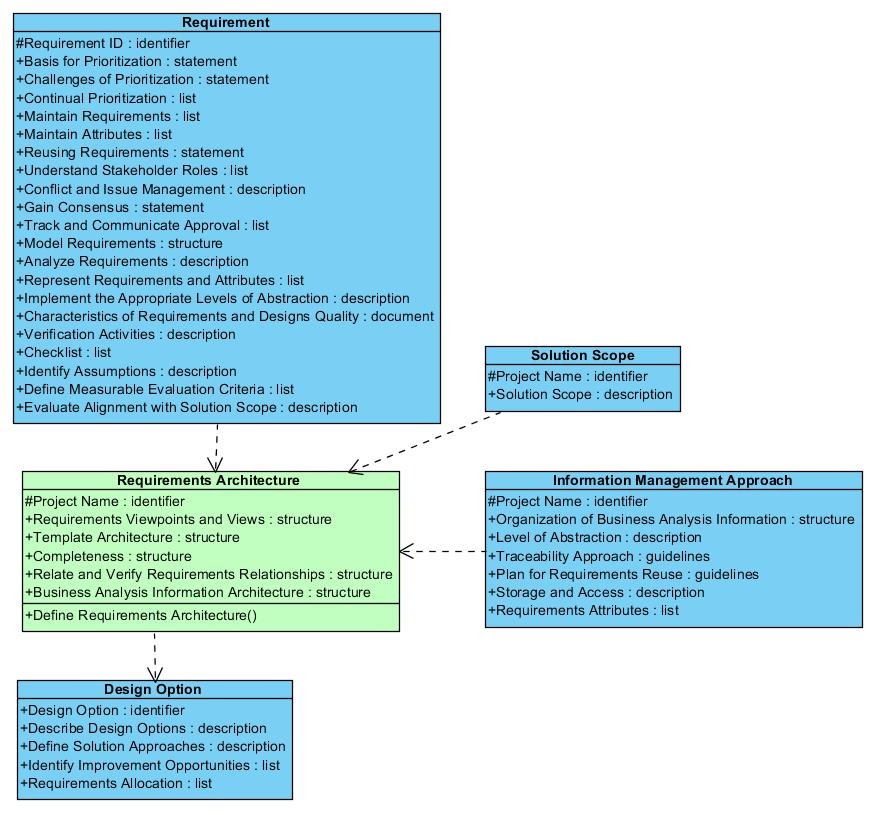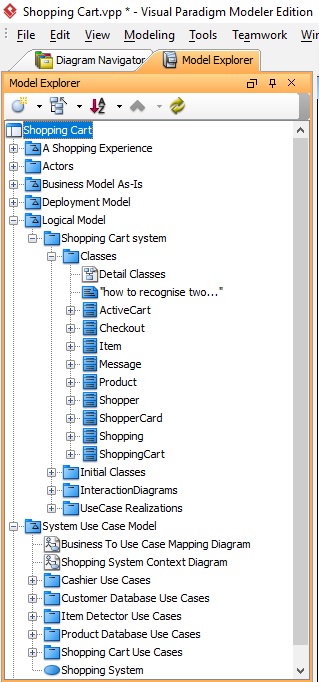Requirements Architecture
Requirements Architecture contains the full set of requirements, models the relationships between them and any contextual information that is recorded. It is used to define design options that can address the set of requirements.


A requirements architecture receives input data from Requirements, the Solution Scope and from the Information Management Approach. The Requirements Architecture is used as an input to Design Options.
Details
Requirements Architecture contains 6 attributes and 1 task:
Project Name - Identifies the project maintaining these requirements.
Requirements Viewpoints and Views - A view into a subset of the requirements for a specific audience.
Template Architecture – A template of the structure in which requirements will be maintained architecture template.
Completeness – A description of the scope of the requirements in the repository.
Relate and Verify Requirements Relationships – A traceability map of the requirements in the repository.
Business Analysis Information Architecture – A model of the repository architecture.
The Requirements Architecture artifact is created by the Define Requirements Architecture task.
Example
This diagram shows the requirements explorer from the Visual Paradigm modeling tool.


The tool is loaded with a customized model template.
The model template is given the project name (Shopping Cart).
The explorer organizes components of the model into packages (or folders). Example packages: 'A Shopping Experience', 'Actors', 'Business Model As-Is', Deployment Model, Logical Model and System Use Case Model.
The Logical Model package contains classes, their attributes and operations.
The System Use Case Model package organizes use cases into functional components.
Model diagrams show views into selected model components and the relationships between them. Example diagrams: 'Detail Classes', 'Business To Use Case Mapping Diagram' and 'Shopping System Context Diagram'.
The tool assists with verifying relationships and completeness of the model.